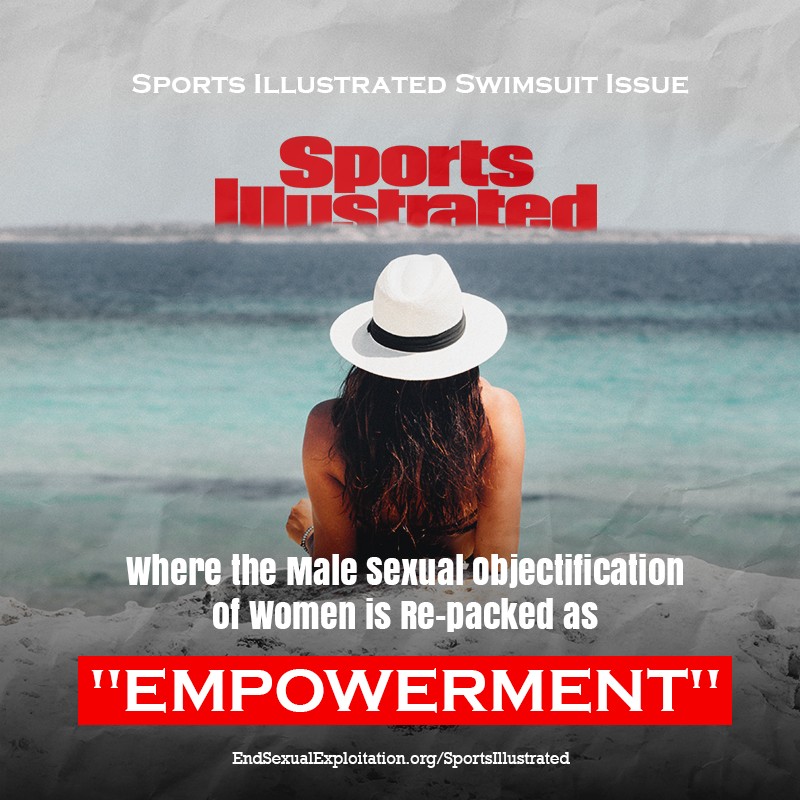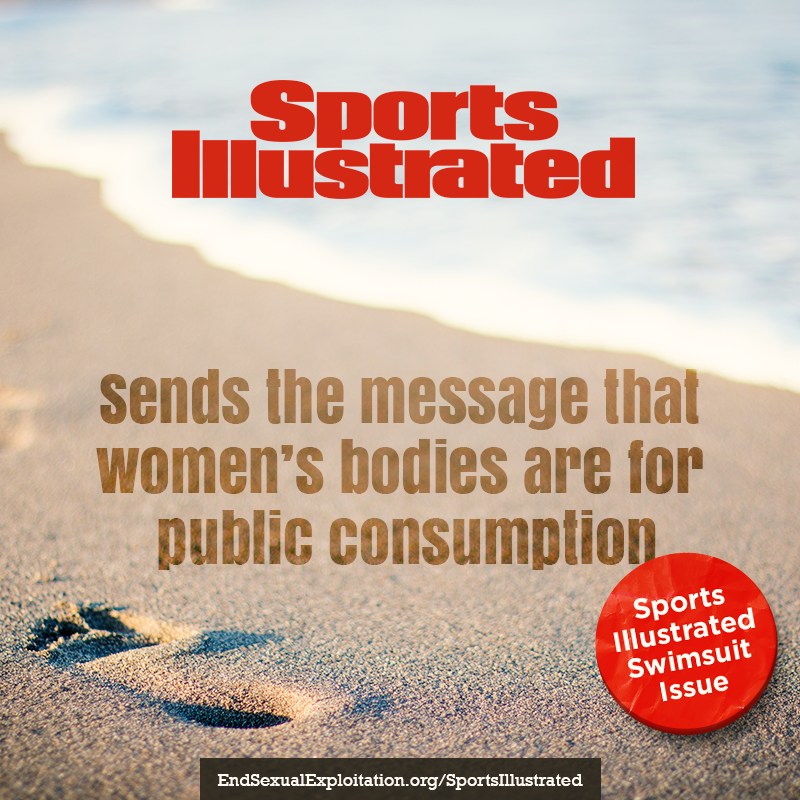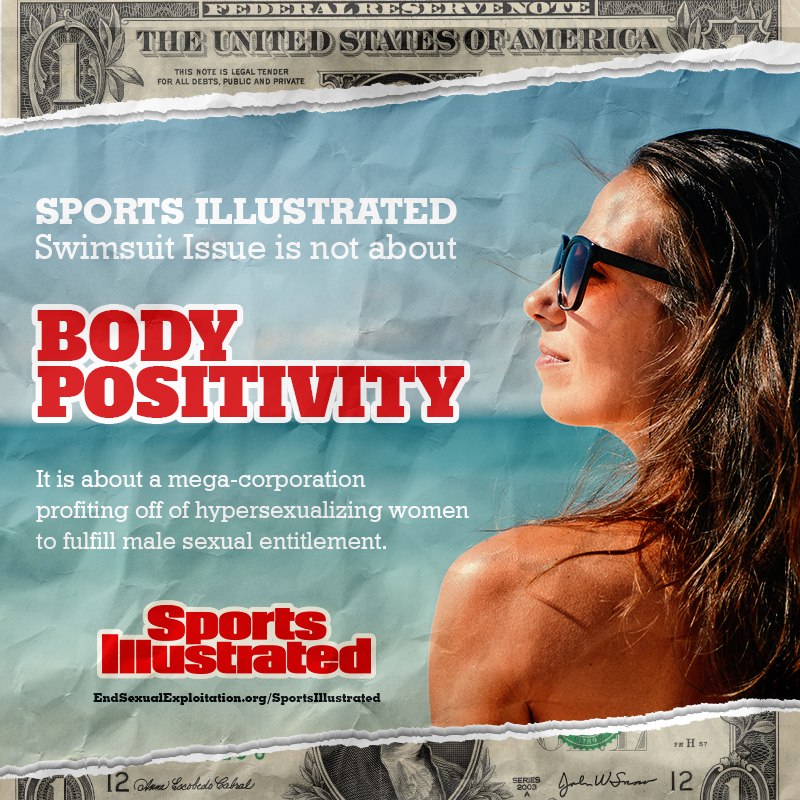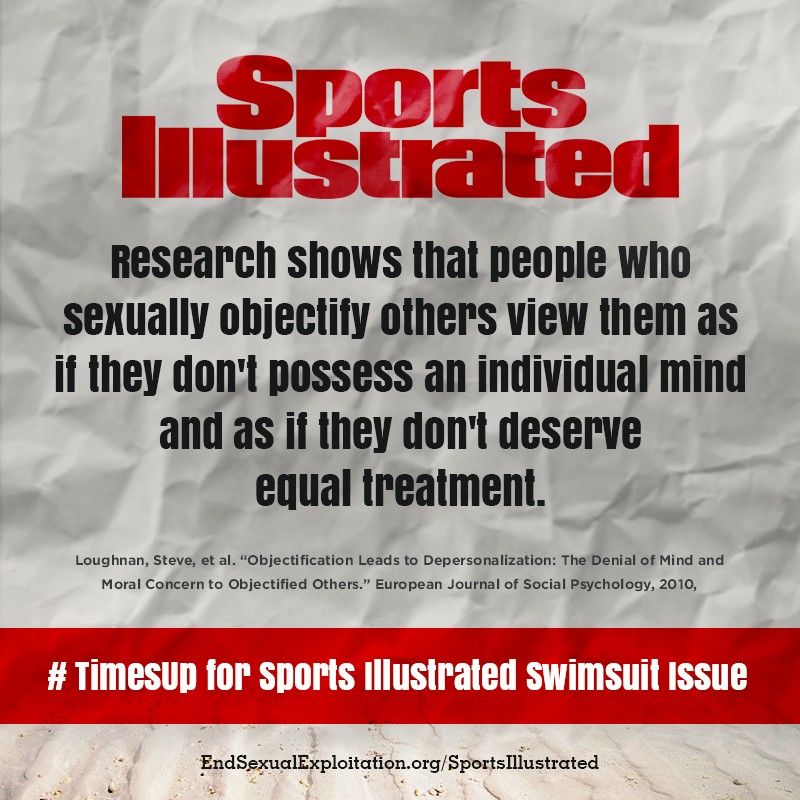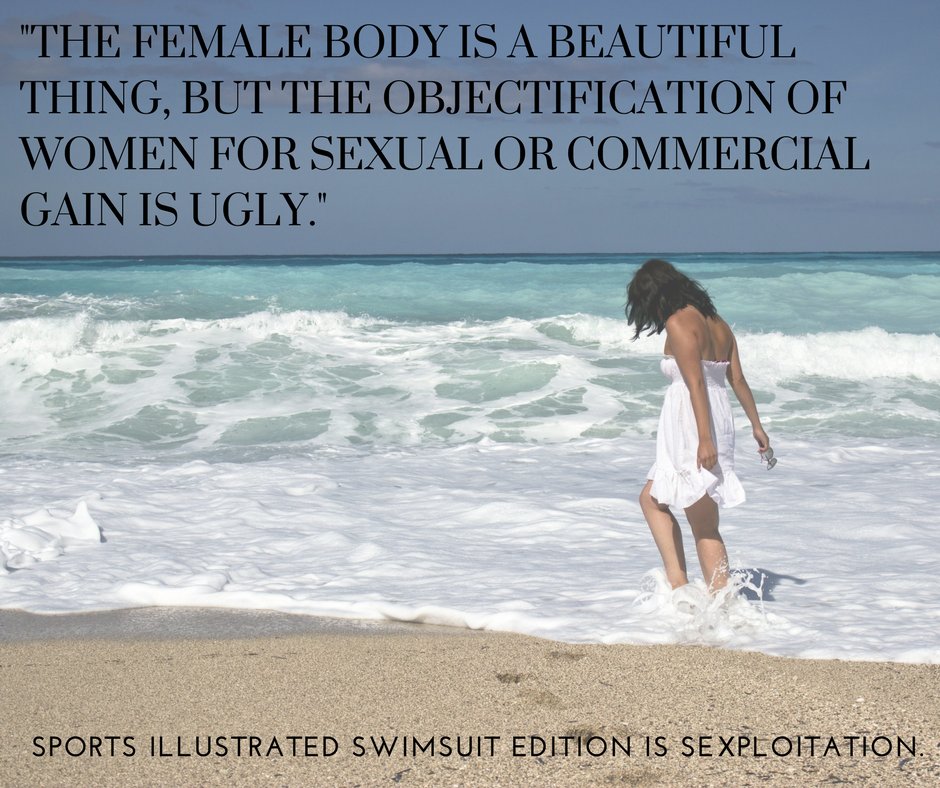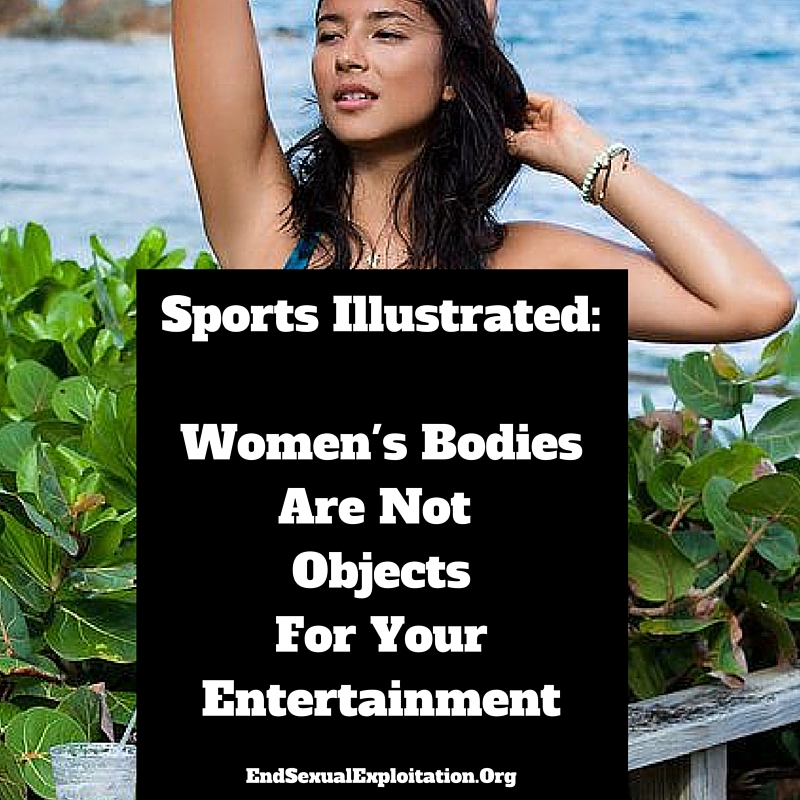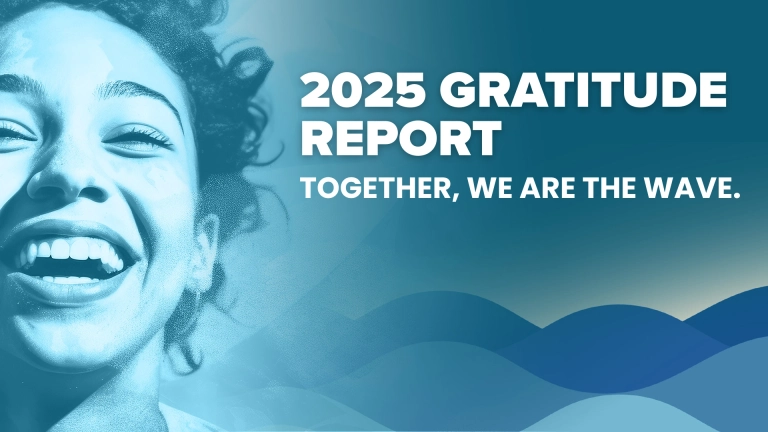
The Problem
Since 1964 this magazine has sexually objectified women for sport and profit.
The Sports Illustrated Swimsuit Issue would be more aptly named the Sexploitation Issue. Women of all shapes, sizes, and ages deserve more than being reduced to body parts for men to ogle. This magazine is sending a message that women’s bodies are for public consumption, and any retailer that displays and sells it is condoning the toxic culture of entitlement to the female body.
These images are not designed to be empowering. Rather, they are designed to portray women as sexually desirable and available to the male customers purchasing this magazine. Women who have achieved remarkable athletic feats do not deserve to be put back into the box of male sexual accessibility in order to promote “body positivity.”
PROGRESS:
After years of grassroots activism, CVS Health decided to permanently remove sports illustrated swimsuit issue from checkout aisles! Let’s keep up the momentum, and contact Target, Walgreens, and Kroger.
FAST FACTS ABOUT SEXUAL OBJECTIFICATION:
- Research shows that when someone is being objectified the objectifier is viewing them as if they do not possess a real, individual mind and as if they are less deserving of moral treatment.
- Another study found that the “frequency of exposure to men’s lifestyle magazines that objectify women, reality TV programs that objectify women, and pornography predicted more objectified cognitions about women, which, in turn, predicted stronger attitudes supportive of violence against women.”
- Further, this study reported that “Consumption of reality TV, sports programming, and pornography was each associated with greater acceptance of objectification of women, which in turn was associated with greater rape myth acceptance and more frequent acts of sexual deception.”
- Some claim that experiences of being sexually objectified “likely to contribute to mental health problems that disproportionately affect women (i.e., eating disorders, depression, and sexual dysfunction) via two main paths. The first path is direct and overt and involves [sexual objectification] experiences. The second path is indirect and subtle and involves women’s internalization of [sexual objectification] experiences or self-objectification.”
- Research on adolescents’ reactions to objectifying magazines found that “when boys consumed sexualizing magazines more often, they expressed more gender-stereotypical beliefs about feminine courtship strategies over time.”
This is a growing cultural recognition. For example, Ada Hegerberg the world’s best soccer player was asked to twerk on stage after receiving the 2018 Women’s Ballon d’Or Award. The host was widely condemned for the sexist overtones that sought to focus on Hegerberg’s sexuality instead of her accomplishments. Sports Illustrated Swimsuit Issue is the magazine equivalent to this scandal.
Patrons have a right to shop free from exposure to soft-core pornography in the checkout line.
The Harm of Sexual Objectification
- Research shows that when someone is being objectified the objectifier is viewing them as if they do not possess a real, individual mind and as if they are less deserving of moral treatment.
- Another study found that the “frequency of exposure to men’s lifestyle magazines that objectify women, reality TV programs that objectify women, and pornography predicted more objectified cognitions about women, which, in turn, predicted stronger attitudes supportive of violence against women.”
- Further, this study reported that “Consumption of reality TV, sports programming, and pornography was each associated with greater acceptance of objectification of women, which in turn was associated with greater rape myth acceptance and more frequent acts of sexual deception.”
- Research on adolescents’ reactions to objectifying magazines found that “when boys consumed sexualizing magazines more often, they expressed more gender-stereotypical beliefs about feminine courtship strategies over time.”
Below is an excerpt of an article published on HuffingtonPost.com
Research shows that when someone is being objectified the objectifier is viewing them as if they do not possess a real, individual mind and as if they are less deserving of moral treatment.
In a society that’s constantly reeling with fresh scandals of sexual assault—from college campuses to media empires—the potential consequences for viewing women as mere plastic playthings are immediately apparent.
Objectification theory gives us a framework for understanding the experiences that many (if not most—if not all) women have: being perceived or treated as an object that is valued for its use by others. This typically occurs when a woman’s body, or body parts, are exaggerated or isolated from her personhood in order to serve the male sexual desire.
Some claim that these experiences are “likely to contribute to mental health problems that disproportionately affect women (i.e., eating disorders, depression, and sexual dysfunction) via two main paths. The first path is direct and overt and involves [sexual objectification] experiences. The second path is indirect and subtle and involves women’s internalization of [sexual objectification] experiences or self-objectification.”
Sports Illustrated Objectifying Images
Unsurprisingly, every issue of Sports Illustrated’s Swimsuit Issue is inherently filled with sexually objectifying images. These images are not designed to be empowering. Rather, they are designed to portray women as sexually desirable and available to the male customers purchasing this magazine.
These images are not about body positivity. They are about male sexual entitlement, and the mega-corporation that profits off of hyper-sexualizing women.








